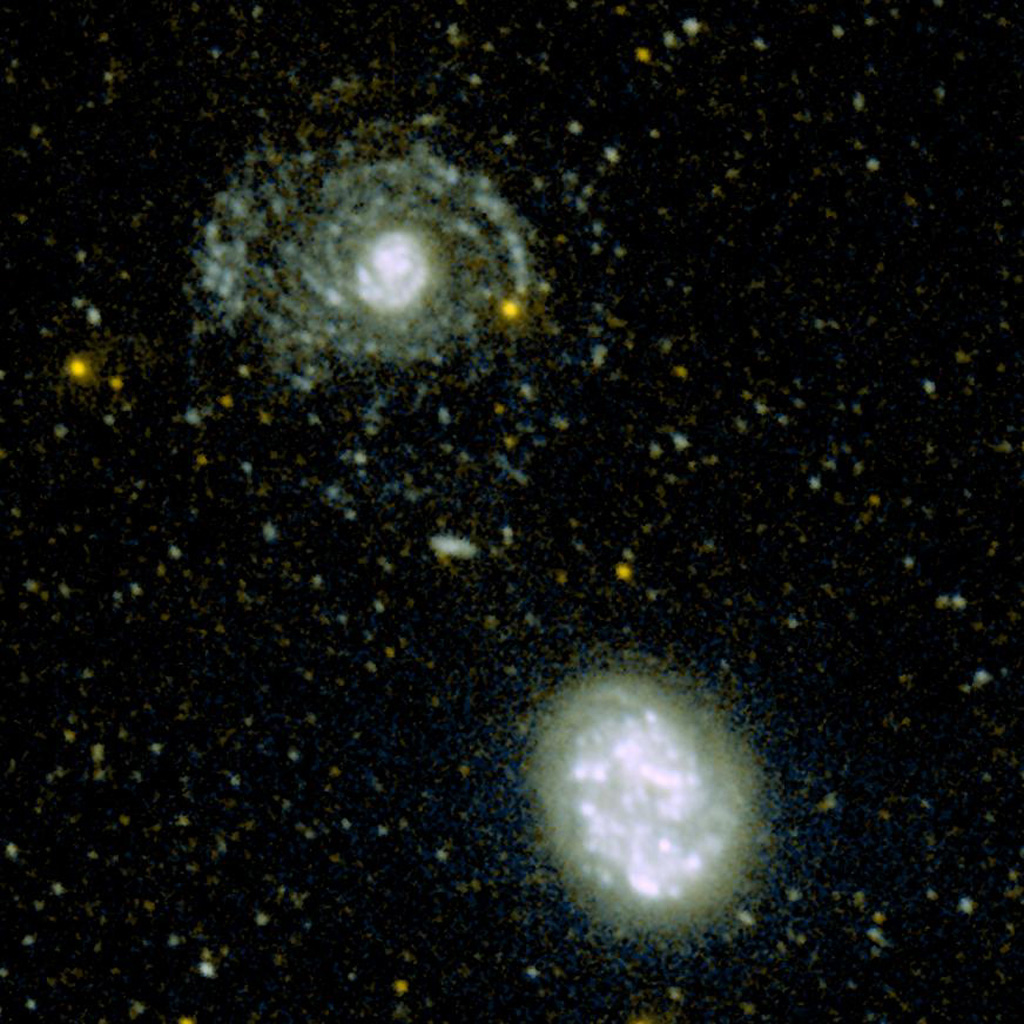Bruce,
Sorry Ann, but that's not a likely assumption, since dark matter out weighs baryonic by about three to one. Going just by appearance alone can lead to wrong conclusions, since there is usually much more that is unseen than that which is seen.
Thanks for that. Good point.
With today's APOD, and reading the explanation, things jarred a little in my head with - how does that add up. How can the 7 times more distant galaxies appear the same apparent size. Twice as distant maybe, but 7 times. Surely not!
I have not been able to find an estimate of the width of the closer galaxy NGC 7320 nor its estimate stellar mass, but given the information from Ann that:
- the Malin 1 galaxy is 650,000 LY wide,
- the milky way as a moderate sized spiral galaxy and is around 150,000 to 200,000 LY wide,
- then the closer NGC 7320 galaxy described as a small spiral can clearly be below 100,000 LY wide. Say 50,000 LY wide as a small galaxy.
Hence with the distance between NGC 7320 and the more distant merging galaxies being around 7 times, all the number can and do make sense to me now, provided these more distant merging spiral galaxies are in the upper limit of size towards that of Malin 1.
In terms of my original question to Ann, and your point about dark matter (3 to 1 or 5.7 to 1), this more significant dark matter mass would still likely be proportion very approximately to baryonic visible mass. Hence in terms of me seeking some sense of the scale in size of smallest to largest spiral galaxies as a ratio, as was inspired from the juxtaposition of galaxies in todays APOD, all good I think. I had no idea the scale for spiral galaxies in size (diameter) was so wide ranging.
So Ann's response did resolve the scale question in my head that I was seeking an answer to.
As for your mention of dark matter, the fact these galaxies are all colliding suggests they are likely at the centre of a galaxy cluster. This being so, then density and total mass of dark matter, as you raise, is likely to be higher than in the closer galaxy which is out on its own in free space. Hence if the question were: "How do the masses compare", rather than how do the diameters compare, then I think your point of dark matter would be very relevant. Or perhaps that should be: "What is the comparison of the size of the two gravity wells involved here." Definitely relevant.

 Stephan's Quintet from Hubble
Stephan's Quintet from Hubble


